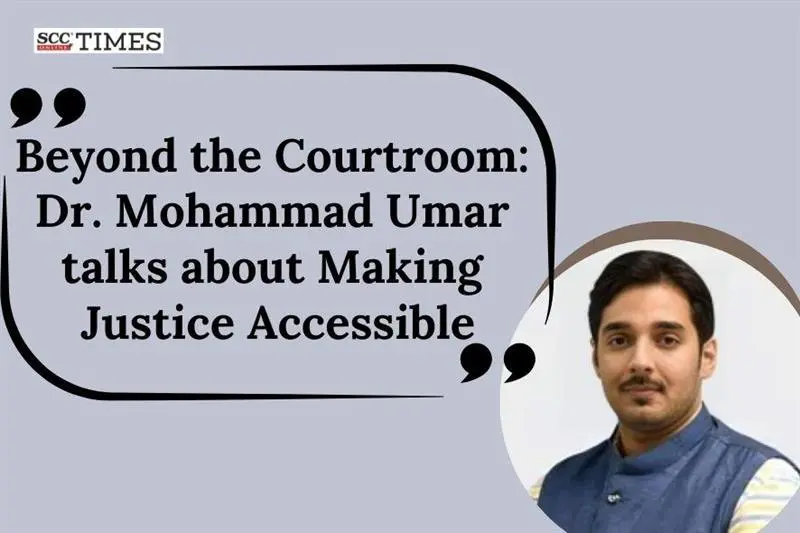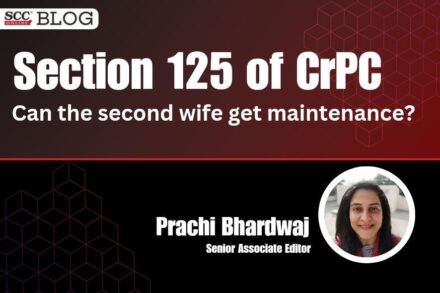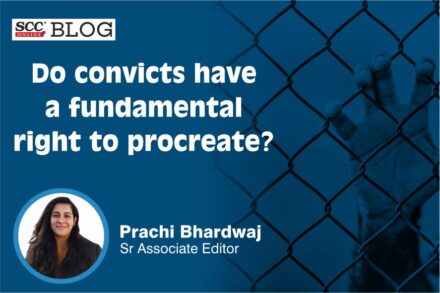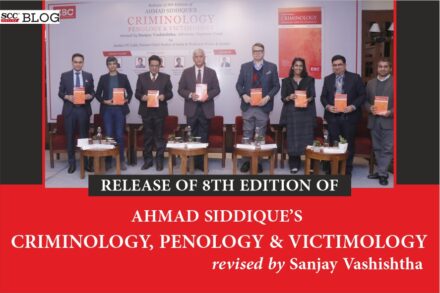Introduction
Dr Mohammad Umar is a distinguished mediator, trainer, and legal expert with an extensive academic and professional background in international law. He has a strong foundation in education, having completed his advanced studies with a Doctor of Philosophy (PhD) and Master of Philosophy (MPhil) in International Wildlife Law from Jawaharlal Nehru University. Over the years, Dr Umar has held various prominent academic roles, serving as alternative dispute resolution (ADR) and International Law Guest Faculty at the University of Lucknow and an Assistant Professor at Galgotias University and Bennett University. He has written for, reviewed, and edited SCOPUS-indexed journals and has also co-edited a book on artificial intelligence.
In addition to his academic contributions, he is the Chief Consultant and Lead Faculty at Samvad Mediation Centre, where he has been instrumental in conducting workshops and training sessions aimed at enhancing mediation skills and fostering amicable dispute resolution in India. He mediates intellectual property, commercial and family disputes and is an internationally recognised mediator by International Mediation Institute (IMI), Netherlands, and Singapore International Mediation Institute (SIMI), Singapore. He has coached several stakeholders belonging to diverse backgrounds and is a frequent invitee to top mediation-related programs.
With his unique combination of legal, academic, and practical experience, Dr Umar has become a key figure in promoting ADR in general and mediation in particular as an effective tool for resolving domestic and international conflicts. His work is pivotal in shaping the future of mediation in India, especially through his contributions to training and policy discussions in the field.
1. Could you share with us your journey into the legal profession and your current role at Samvad Mediation Centre?
Thanks for the question. Joining law was a conscious exercise because I always believed that the function of law is not just to maintain order or keep people in line with State policy, but it is also the means of achieving justice and peace in society. Academics was always my first choice, so I did not attempt any judiciary or the Union Public Service Commission (UPSC) Exam even once. I considered academics an important medium for grooming young individuals who have a critical mind and can help in nation-building. I was fortunate to start my career early by teaching at Galgotias University and then at Bennett University. I thoroughly enjoyed my tenure at both of these places.
I always had a hunch that being in academics would allow me to have the freedom of a pen, and to a large extent, I was right. It was a beautiful journey with immense opportunities to have meaningful discussions and collaborations with highly motivated individuals and organisations. More than what I have achieved through publications or lecture invitations, my key takeaway from teaching was the love of my students and long-term friendships with some of my brilliant colleagues.
While academics gave me a lot of peace of mind, I always thought that there was more to me as an individual than just being a teacher. Also, I realised that what we teach in law schools is far-far away from what transpires in and around the courtroom. This triggered my interest in the practice side of law. However, the state of affairs in litigation was not very exciting. Given the time, money, and energy one puts into litigation, I knew that for a common person, it was more of a threat than a means of justice. During this phase, I explored ADR, particularly mediation, and found that it was the most logical alternative. It can have win-win outcomes for parties in conflict while also preserving their relationships. It struck a chord with me, so I made sure to take the best training in mediation available in India as well as abroad before formally getting associated with the Samvad Mediation Centre, Lucknow in 2024. Since then, we have mediated several sensitive disputes and trained people from quite diverse backgrounds (doctors, police, lawyers, institutional leaders, academics, civil society members, law students, etc.).
2. As the Chief Consultant and Lead Faculty at the Samvad Mediation Centre, you have conducted numerous workshops and training sessions. Based on your experience, what strategies have you found to be most effective in equipping mediators with the necessary skills and fostering a culture of amicable dispute resolution among participants?
Whether it’s university students or professionals learning mediation with us, the basics of the coaching remain the same. Within one day of our training at the School Management Committee (SMC), the participants realise that they are into something amazing and transformational. We ensure that the entire process of training is more practical than theoretical. It is not just the art of mediation that we teach, our sessions are a complete package that covers everything that is ancillary to mediation. For instance, negotiation, communication, understanding of the law, and use of tech in dispute resolution.
Activities are designed for each training module so that participants grasp the concepts through real-time simulations. We also share quality reading material and ensure they reach the level of “conscious competence” by the end of our program on the ladder of learning. We aim to democratise mediation learning by offering affordable courses while maintaining the best industry standards. All our past participants (hailing from at least 15 States and 3 Countries) expressed satisfaction with our mediation training program. In fact, I am happy to share with you that most of them found our training the best upskilling program that they had ever attended. This is immensely satisfying and keeps me indirectly associated with teaching, the first love of my life.
3. Samvad Mediation Centre often emphasises making justice delivery accessible to all. How do you ensure mediation services reach the marginalised or underrepresented groups? Can you share any success stories where mediation led to significant societal or individual impact?
We are leading a nationwide ADR Literacy Mission with the goal that the benefits and awareness of ADR should reach every stakeholder in the country. People are still skeptical about the effectiveness of ADR. While the purpose of arbitration is diluted to some extent because of court interferences, mediation holds a strong promise, especially after the enactment of the Mediation Act, 2023, and the creation of the Singapore Convention on Mediation. One of our jobs is to instill confidence in effective ADR mechanisms and call people towards their logical and functional superiority as compared to drudgeries of litigation. Our fee structure is very rationalised, and we do select pro bono mediation where we think parties deserve.
We are in touch with community leaders and non-governmental organisations (NGOs) but have yet to achieve a noticeable societal impact. However, in inter partes mediation, we have seen some success. The one we recently engaged with was a conflict regarding revenue sharing of the content put on YouTube. It was between two old friends. One created the channel and gave tech support, and the other provided content. After a few sittings and understanding the ramifications of litigation, they could come to some common terms. I was glad they saved time, money, and energy by not going to the oourts,and their friendship was sustained.
In another case, a wife and husband were feuding because of an extramarital affair. The relationship looked impossible to continue, but since the marriage was solemnised not very long ago, the terms of separation looked tricky. Lawyers’ advice further aggravated the situation. We played an important role and settled the matter without too much emotional bloodshed.
4. What role do empathy and active listening play in effective mediation? How do you approach preparing mediators to handle emotionally charged or high-stakes disputes?
Empathy is at the heart of mediation. It is a part of the process where the mediator is required to keep parties in a positive framework without making them feel miserable about their situation. It helps parties open up and establish a rapport with the mediator. Similarly, without active listening, you will lose your client in the first interaction. In fact, listening and body language are a major part of any communication. Little nudges, healthy eye contact, and extensions go a long way in making the parties feel heard. In our training, we give almost a whole day to just mastering communication as a mediator. We teach participants time-tested communication techniques like affect labelling, inquiry, etc., so that they feel confident while doing any kind of mediation — low or high stake.
5. How do you approach the drafting and enforcement of mediation settlement agreements during training, and what common pitfalls should mediators and parties avoid to ensure that these agreements are robust and enforceable?
A mediated settlement agreement is essentially a contract between parties. So, all basics of the Contract Act, 1872, should be adhered to. The drafter, always a lawyer, must keep in mind that the settlement should keep both parties in mind, and the terms should be spelled out clearly, in vernacular language if necessary, so that there is a consensus ad idem. They are also expected to have an advanced understanding of the contract and its broad structure. A poorly drafted contract can become a ground for future disputes and thus be counterproductive. Keeping these aspects in mind, we impart basic literacy to mediation trainees about drafting a good settlement and offer top-up aster Service Agreement (MSA) drafting workshops to chisel out their drafting skills through group exercises and conceptual understanding.
6. The Mediation Act, 2023, emphasises voluntary mediation. How do you see this principle influencing the overall acceptance and effectiveness of mediation in India?
Mediation is, by default, voluntary, as also evident in Section 5 of the Mediation Act, 2023. No one can force you to mediate unless it is the requirement under the statute. As in our case, Section 12-A of the Commercial Courts Act, 2015, makes pre-litigation mediation compulsory for commercial suits. This provision was perhaps inserted to promote commercial mediation and lessen the burden on Courts, but paradoxically, its mandatory nature has caused a great dilution in its effect and import. Litigants now use exceptions like “urgent interim relief” to bypass Section 12-A. It shows that mediation cannot be imposed upon anyone because the underlying philosophy is that with the help of the mediator, parties should themselves come up with a settlement idea that is sustainable and happily acceptable to both. Holding the parties by their collar and making them sit at the negotiation table is a recipe for disaster. The mediator is not there to impose she/he is there to facilitate.
7. What are your thoughts on the future of mediation in India, particularly with the growing trend towards online dispute resolution (ODR) and digital tools?
Mediation is the logical alternative to the clog in overwhelmed Courts. The advent of the Singapore Mediation Convention and the Mediation Act is a sign that there is a strong commercial force behind mainstreaming mediation as a dispute resolution, even more so than arbitration, because it transcends legal centrism and potential court-induced red-tapism on vague grounds. I just hope that the mediation that we see in the coming times also helps the common people of India and is accessible to them. It should not become a phenomenon by, of, and for the elite.
With growing digital literacy, resorting to ADR has also become easier. Platforms are offering large-scale semi and fully automated dispute resolutions that make things easier even for digital migrants who are less conversant with how the world of technology works. With the advent of artificial intelligence (‘AI’), the principle is simple. It is there to assist us and help us be smarter in our work. I have personally used AI in exploring the possibilities of settlement between parties, and the results have been quite helpful. Young and experienced mediators should embrace technology with all its benefits and make use of the endless opportunities that ADR offers to make our lives less stressful.
8. If you had to choose an alternate career path as a young adult, what profession or field would you have considered, and what factors might have influenced that decision?
Social entrepreneurship has always excited me. In fact, a part of the decision to transition from being employed to working independently was inspired by the book ‘How to Change the World: Social Entrepreneurs and the Power of New Ideas’ by David Bornstein. To answer your query, if I had not been in mediation, I would have probably taken up facilitating access to literacy and nutrition for the underprivileged as my life mission.
9. For young lawyers looking up to your journey, especially in mediation, what, would you say, are the personal qualities or skills they need to develop to succeed in this niche but impactful field?
I do not think I have done anything inspiring till now. If, in a single year, taking mediation (through training, practice, and coaching) to more than a thousand people hailing from seven countries is some achievement, then maybe we are on the right track. But there is still a long way to go. All I would say is that a career in mediation is for people who can clearly see the illogic of litigation today and have a social entrepreneurial streak in them. If you find joy in adding value to people’s lives by handholding them out of their conflict by genuinely listening to them, then mediation is for you.






